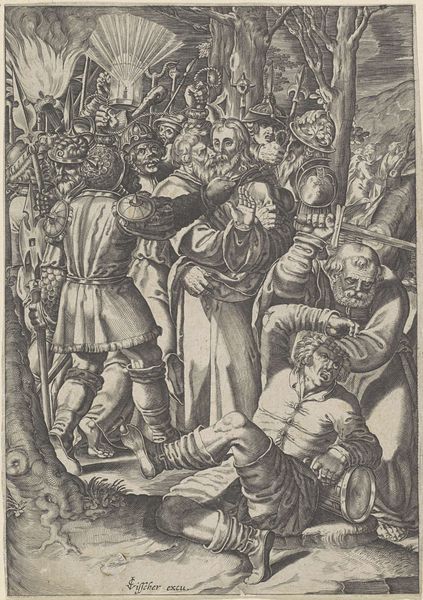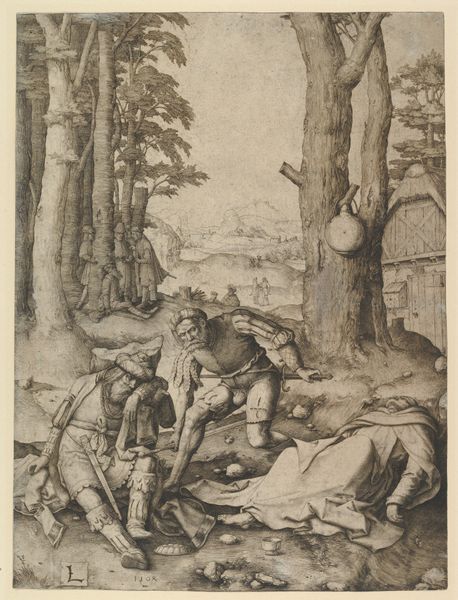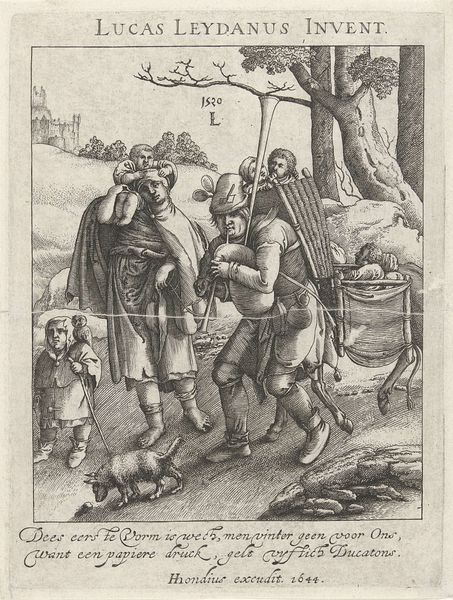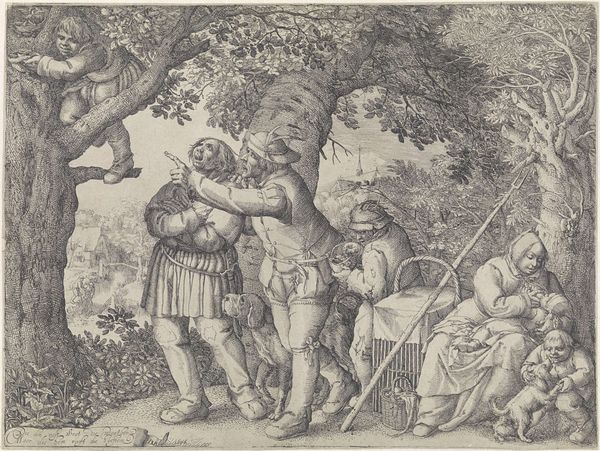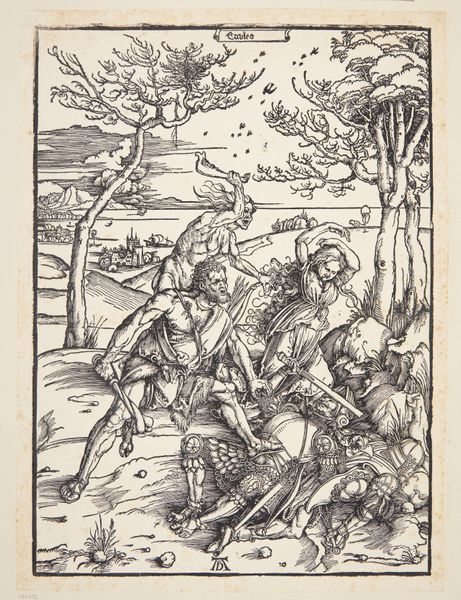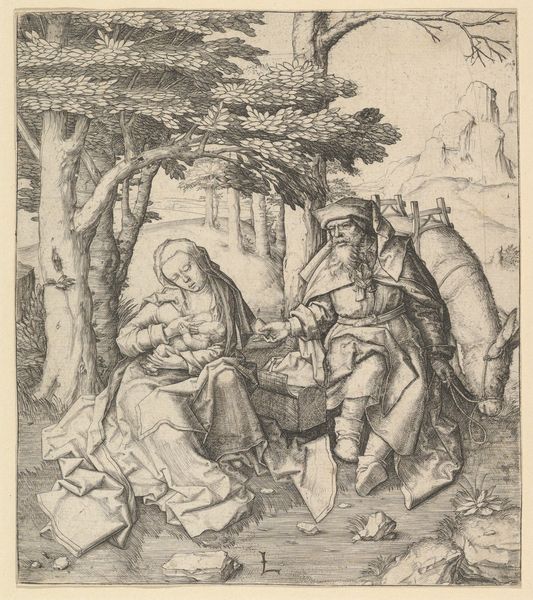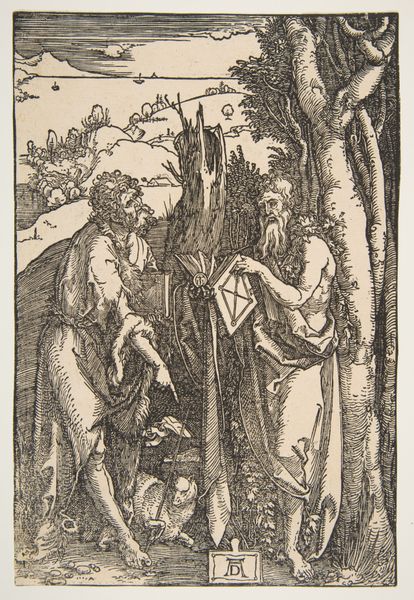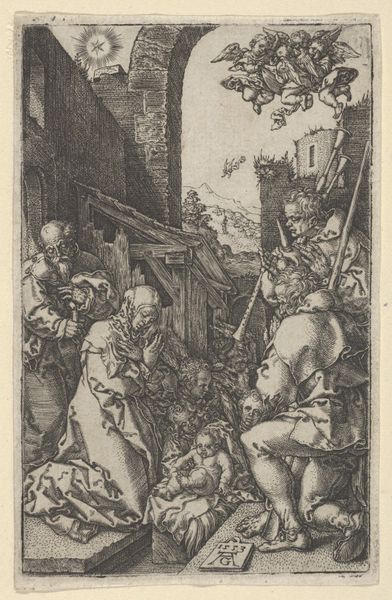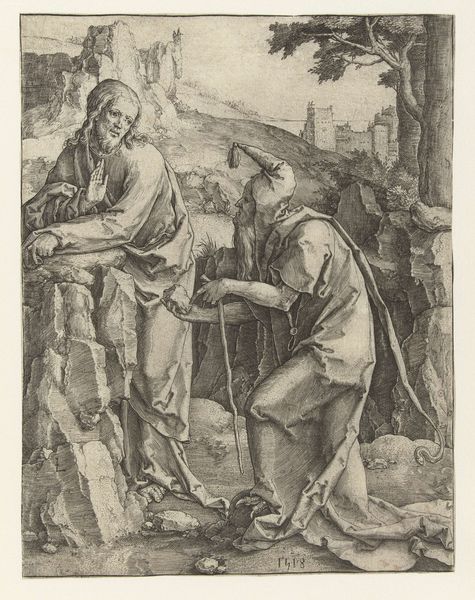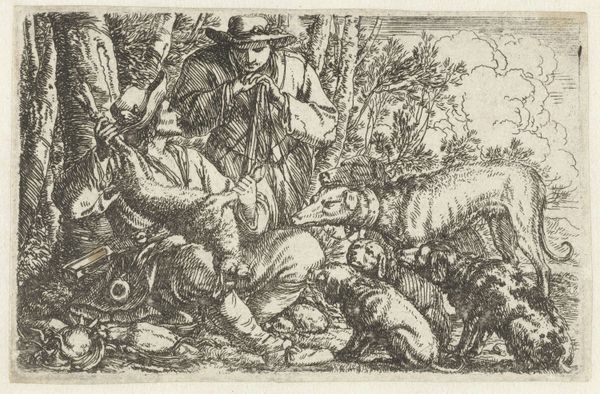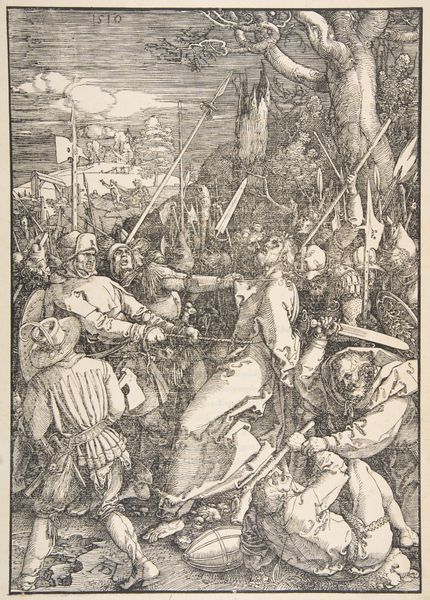
print, engraving
#
ink drawing
#
narrative-art
#
pen drawing
# print
#
pencil sketch
#
landscape
#
figuration
#
italian-renaissance
#
engraving
Dimensions: height 149 mm, width 117 mm
Copyright: Rijks Museum: Open Domain
Editor: So, here we have Marcantonio Raimondi's engraving, "Three Pilgrims," created sometime between 1506 and 1534. The figures feel so still amidst this sprawling landscape. I'm struck by how weary the pilgrims seem. What do you see in this piece? Curator: It’s interesting you pick up on their weariness. Pilgrimages were often acts of deep devotion, but also deeply political and social acts, weren't they? Who gets to travel? Who is excluded? How are these figures, with their varied attire, situated within the power dynamics of the early 16th century? What does it mean to choose pilgrimage as a path in this landscape? Editor: I hadn’t considered the political implications. I was focused on the individual journey aspect. Do you think their clothing might indicate their social standing or origin? The one in the fur hat, for example, seems distinct from the others. Curator: Absolutely. The fur hat could signify status, perhaps wealth, or even a connection to a specific geographic region. Consider, too, the historical context. Religious reforms were brewing. Travel itself was fraught with peril and opportunity. How might this image speak to emerging notions of self and community amidst religious upheaval? Is their "journey" a forced exile rather than freely willed? Editor: So, the act of pilgrimage could be both a personal quest and a statement against or within the prevailing social structures? The landscape almost acts as a witness to their journey. Curator: Precisely! The landscape isn't just a backdrop; it's an active participant, reflecting both the beauty and harsh realities of their journey. Raimondi invites us to think critically about their position. What questions about power, faith, and belonging does it provoke for us today? Editor: I see it so differently now! I was initially drawn to the surface of the image but I appreciate understanding the socio-political dimensions. Curator: And that's the beauty of art history: continually reassessing, reframing, and revealing. Every journey leaves a mark, on both the traveler and those who observe.
Comments
No comments
Be the first to comment and join the conversation on the ultimate creative platform.


